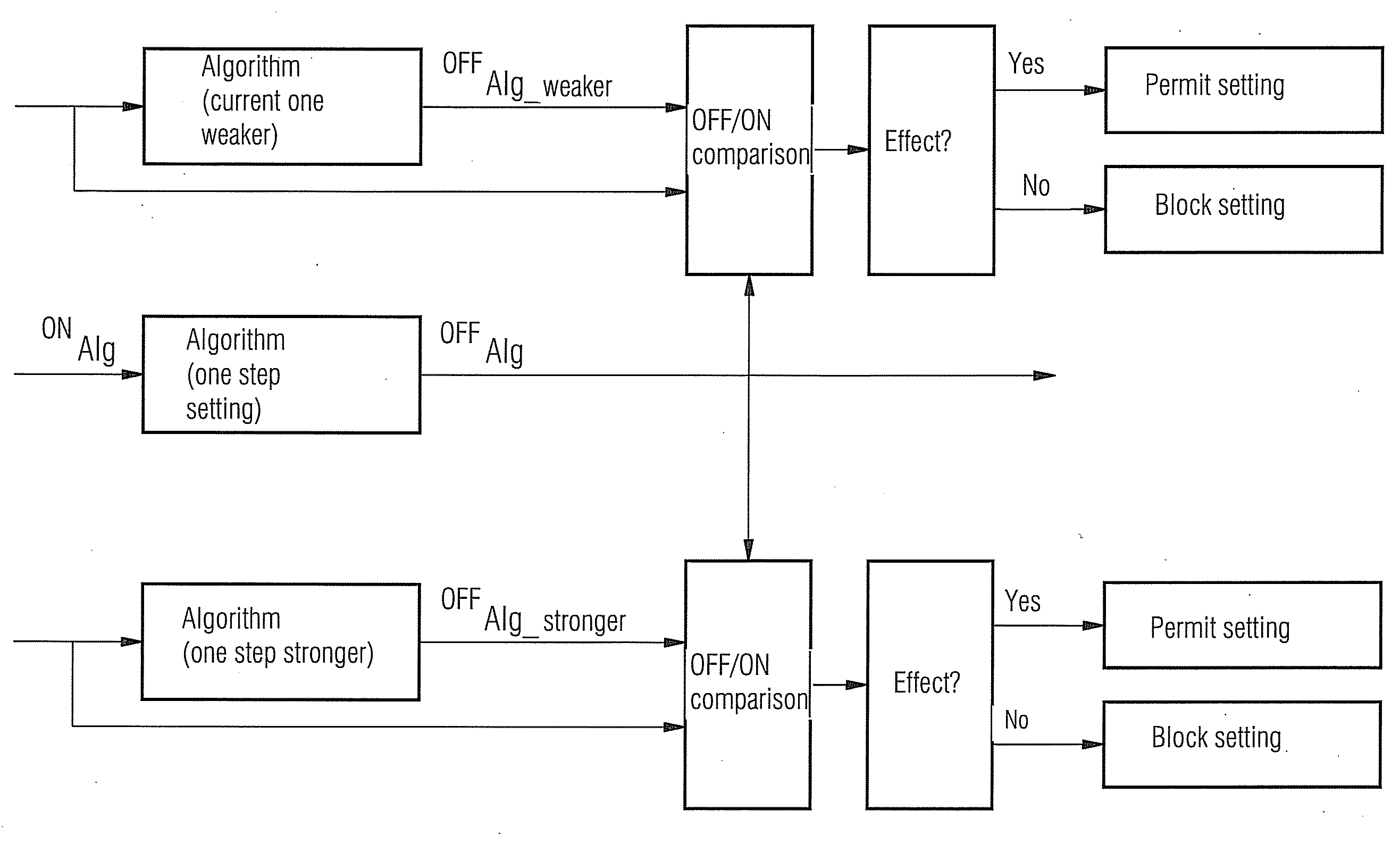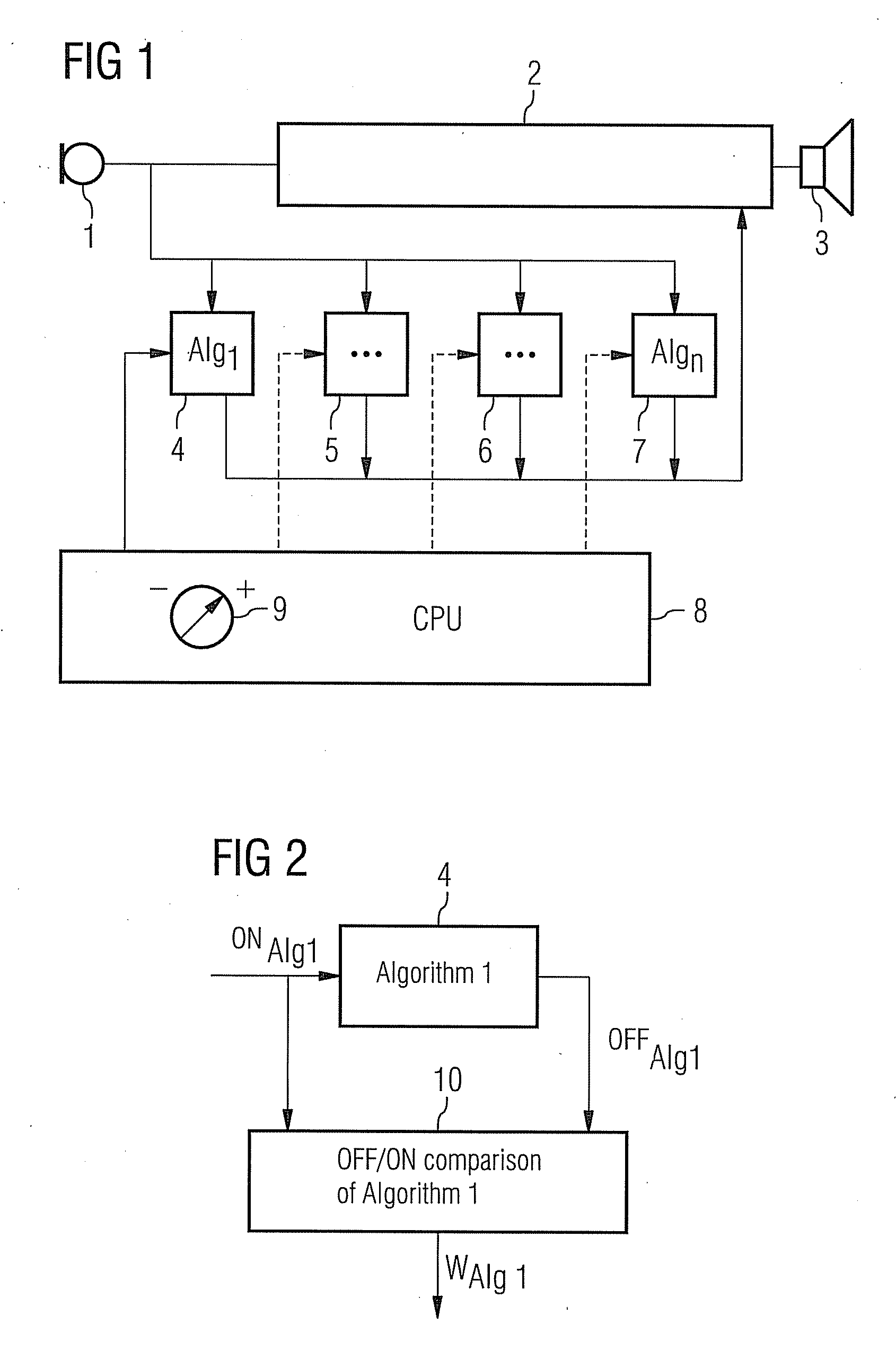Individually adjustable hearing aid and method for its operation
a hearing aid and individual technology, applied in the direction of deaf-aid sets, electric devices, etc., can solve the problems of large inconvenience, poor precision of this type of hearing aid, and relatively complex operation
- Summary
- Abstract
- Description
- Claims
- Application Information
AI Technical Summary
Benefits of technology
Problems solved by technology
Method used
Image
Examples
Embodiment Construction
[0031]FIG. 1 shows a schematic representation of a hearing aid according to the invention. It comprises a signal transfer route which comprises an input unit 1 in the form of a microphone, a signal processing and / or amplification unit 2 and an output unit 3 in the form of a loudspeaker. Signals arriving at the microphone can be passed on in a pre-determined manner amplified, for example, non-linearly, to the output unit 3. Further signal processing units 4, 5, 6, 7 are also included in which incoming signals can be altered by a particular algorithm before they are passed on to the signal processing and / or amplification unit 2, and flow into the signal applied to the output unit 3. Furthermore, the further signal processing units 4, 5, 6, 7 can be configured as hardware, separately or as a component of the signal processing and / or amplification unit 2 and / or purely in the form of the provision of suitable signal-processing software. This can be left out of consideration for the funct...
PUM
 Login to View More
Login to View More Abstract
Description
Claims
Application Information
 Login to View More
Login to View More - R&D
- Intellectual Property
- Life Sciences
- Materials
- Tech Scout
- Unparalleled Data Quality
- Higher Quality Content
- 60% Fewer Hallucinations
Browse by: Latest US Patents, China's latest patents, Technical Efficacy Thesaurus, Application Domain, Technology Topic, Popular Technical Reports.
© 2025 PatSnap. All rights reserved.Legal|Privacy policy|Modern Slavery Act Transparency Statement|Sitemap|About US| Contact US: help@patsnap.com



